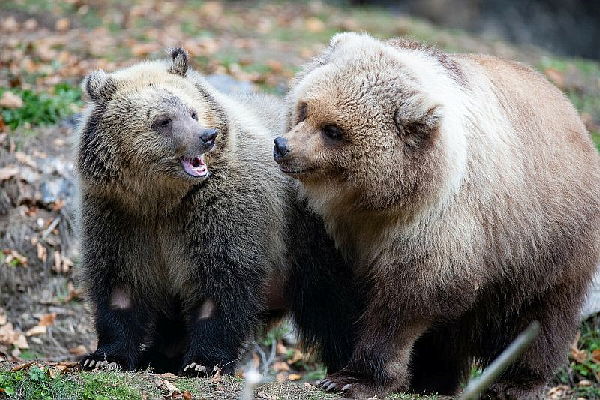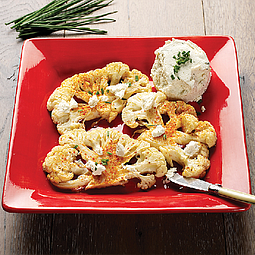Double Trouble, Double Adorable
Zookeeper Allison Barr discusses her new charges – bear cubs Juniper and Fern
November 26, 2022 at 6:04 p.m.
Bear fans can enjoy Woodland Park Zoo's new brown bear cubs in the Living Northwest Trail. Fern on the left, a grizzly bear, and Juniper on the right, a brown bear, are rescued female cubs born this past winter in Montana and Alaska, respectively. (Jeremy Dwyer-Lindgren/Woodland Park Zoo)
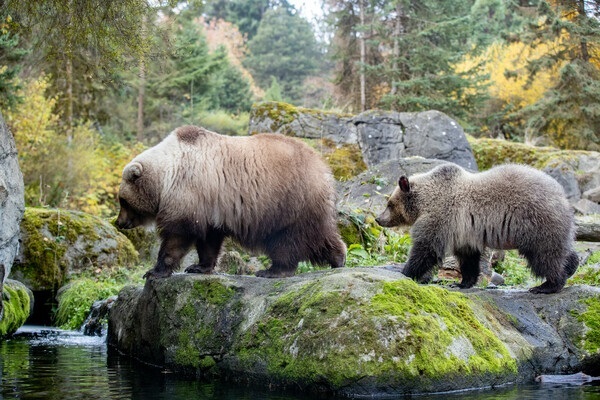 Juniper and Fern are exploring every nook and cranny of the bear habitat at the Living Northwest Trail exhibit at the Woodland Park Zoo. [Jeremy Dwyer-Lindgren | Woodland Park Zoo]
Juniper and Fern are exploring every nook and cranny of the bear habitat at the Living Northwest Trail exhibit at the Woodland Park Zoo. [Jeremy Dwyer-Lindgren | Woodland Park Zoo]
“Visitors will notice a size difference,” says Allison about the cubs, who were both born this past winter. “That is because Juniper is an Alaska coastal brown bear, and the new cub is an inland grizzly bear.” Allison explains that the grizzly bear is a subspecies of brown bear. “I like to tell people that all grizzly bears are brown bears but not all brown bears are grizzly bears. While brown bears are omnivores, the coastal brown bear diet consists heavily of fish, which has contributed to its larger size in comparison to the smaller grizzly.”
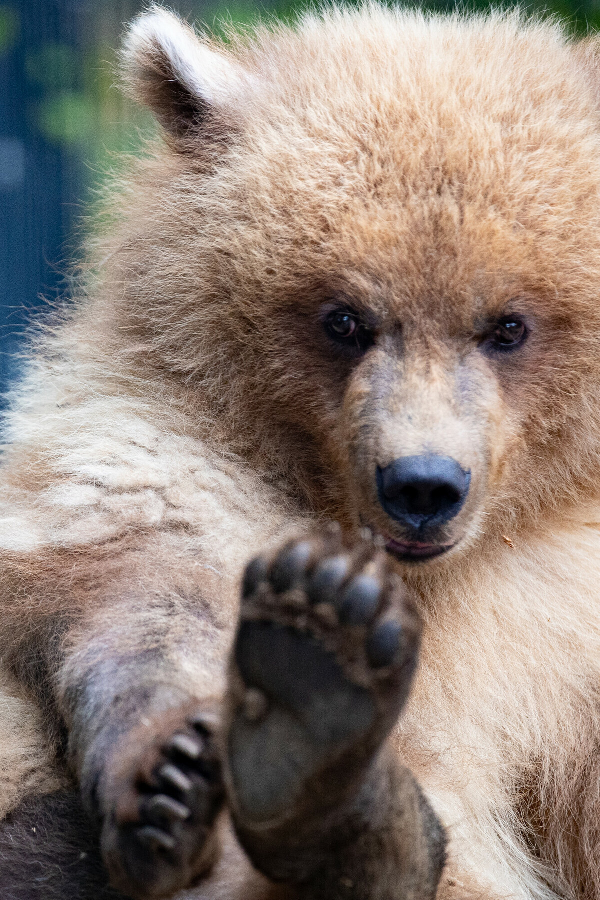 Juniper when she first arrived at the Woodland Park Zoo in July [Jeremy Dwyer-Lindgren/Woodland Park Zoo]
Juniper when she first arrived at the Woodland Park Zoo in July [Jeremy Dwyer-Lindgren/Woodland Park Zoo]
Grizzly bear cub Fern was born this past winter in Montana and arrived at the zoo in October, weighing 95 pounds. She recently weighed in at 167 pounds. In addition to her smaller size, Fern’s snout is longer than Juniper’s.
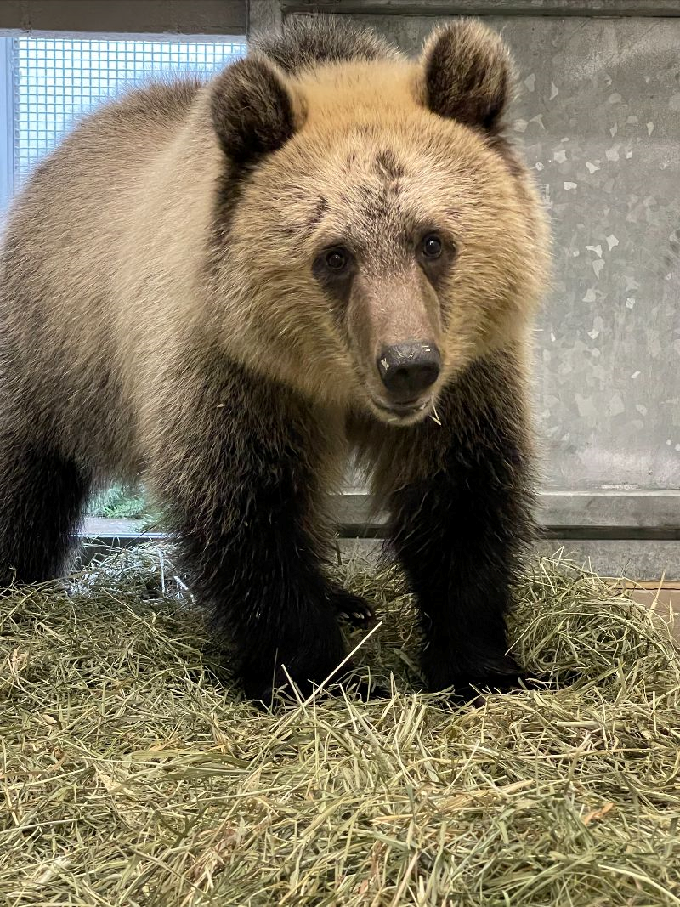 Fern, shortly after arriving at the zoo [Jeremy Dwyer-Lindgren/Woodland Park Zoo]
Fern, shortly after arriving at the zoo [Jeremy Dwyer-Lindgren/Woodland Park Zoo]
According to Kevin Murphy, senior director of Animal Management at Woodland Park Zoo, becoming familiar with humans during a rehabilitation process creates an incredibly dangerous situation later in life. “Bears are extremely smart and resourceful and can have more than a 2,000-mile home range. Even moving ‘problem’ bears to a remote location is generally not successful in the long term, as was the experience for this cub’s mother,” he said.
“It’s unfortunate when a wild cub loses its mother and becomes an orphan… the cub learns so much about how to be a bear directly from its mother,” added Murphy. Both cubs were too young to survive on their own, but Juniper’s presence, who arrived at the zoo first, has helped Fern acclimate to her new home much faster than usual.
“Having Juniper here has truly helped,” said Erin Sullivan, an animal curator at the zoo. “The cubs are fast becoming best buds and Juniper has taken Fern under her wing. Zoo-goers are going to really enjoy watching the cubs grow, play and get into mischief together.”
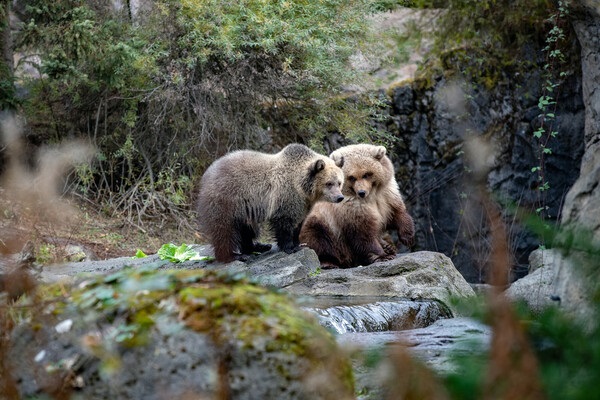 Fern (left) and Juniper are fast becoming best buds [Jeremy Dwyer-Lindgren | Woodland Park Zoo]
Fern (left) and Juniper are fast becoming best buds [Jeremy Dwyer-Lindgren | Woodland Park Zoo]
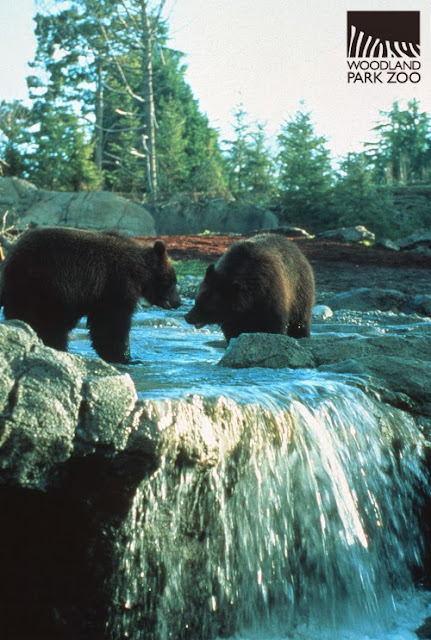 Keema and Denali playing in the stream way back in 1994! From Woodland Park Zoo archives.
Keema and Denali playing in the stream way back in 1994! From Woodland Park Zoo archives.
Keema and the cubs rotate in the exhibit. And while they don't occupy the same space, they can sometimes see, hear and smell each other. Allison tells us that, "Keema was curious...Initially they did 'huff' at each other across the holding room, but after they got used to seeing each other they don't vocalize at each other anymore. There isn't much interacting between them."
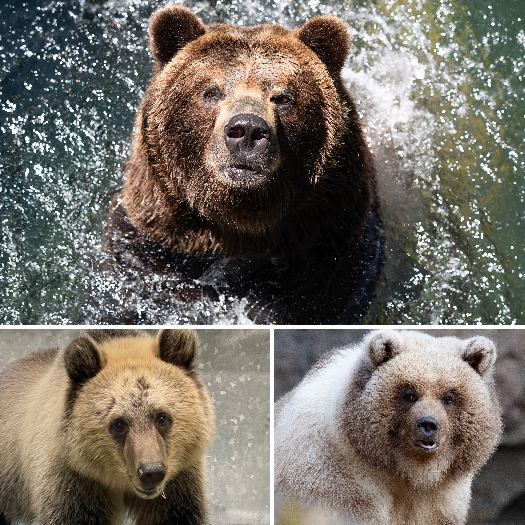 (top) Keema, the distinguished older gentleman grizzly bear at the Woodland Park Zoo
(top) Keema, the distinguished older gentleman grizzly bear at the Woodland Park Zoo(bottom) Fern and Juniper, the newest residents at the zoo's Living Northwest Trail
[Jeremy Dwyer-Lindgren]
“To keep the bears stimulated and enriched, they are moved between the off-view indoor dens and the public exhibit three to five times a day. We offer new enrichment such as produce hidden throughout the exhibit. This stimulates natural behaviors such as foraging, smelling and digging.”
In the indoor dens, the bears also have access to many enrichment items, including balls, fire hose braids, hay and a pool, with items hidden throughout. “In both the indoor dens and public exhibit, we offer them popsicles (frozen fruit juice with fruit in it),” says Allison. “We also scatter a variety of scents to stimulate their keen sense of smell. The beauty of enrichment is we don’t provide it on a routine schedule; offering at varying times makes the activities or treats even more enriching for the bears.”
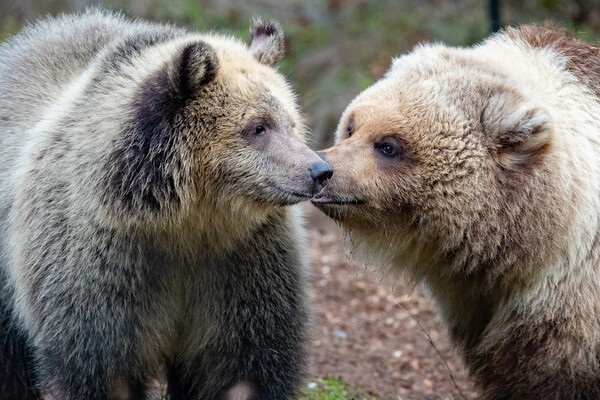 Animal keeper Allison Barr says that the bears at the Woodland Park Zoo are very gentle [Jeremy Dwyer-Lindgren]
Animal keeper Allison Barr says that the bears at the Woodland Park Zoo are very gentle [Jeremy Dwyer-Lindgren]
